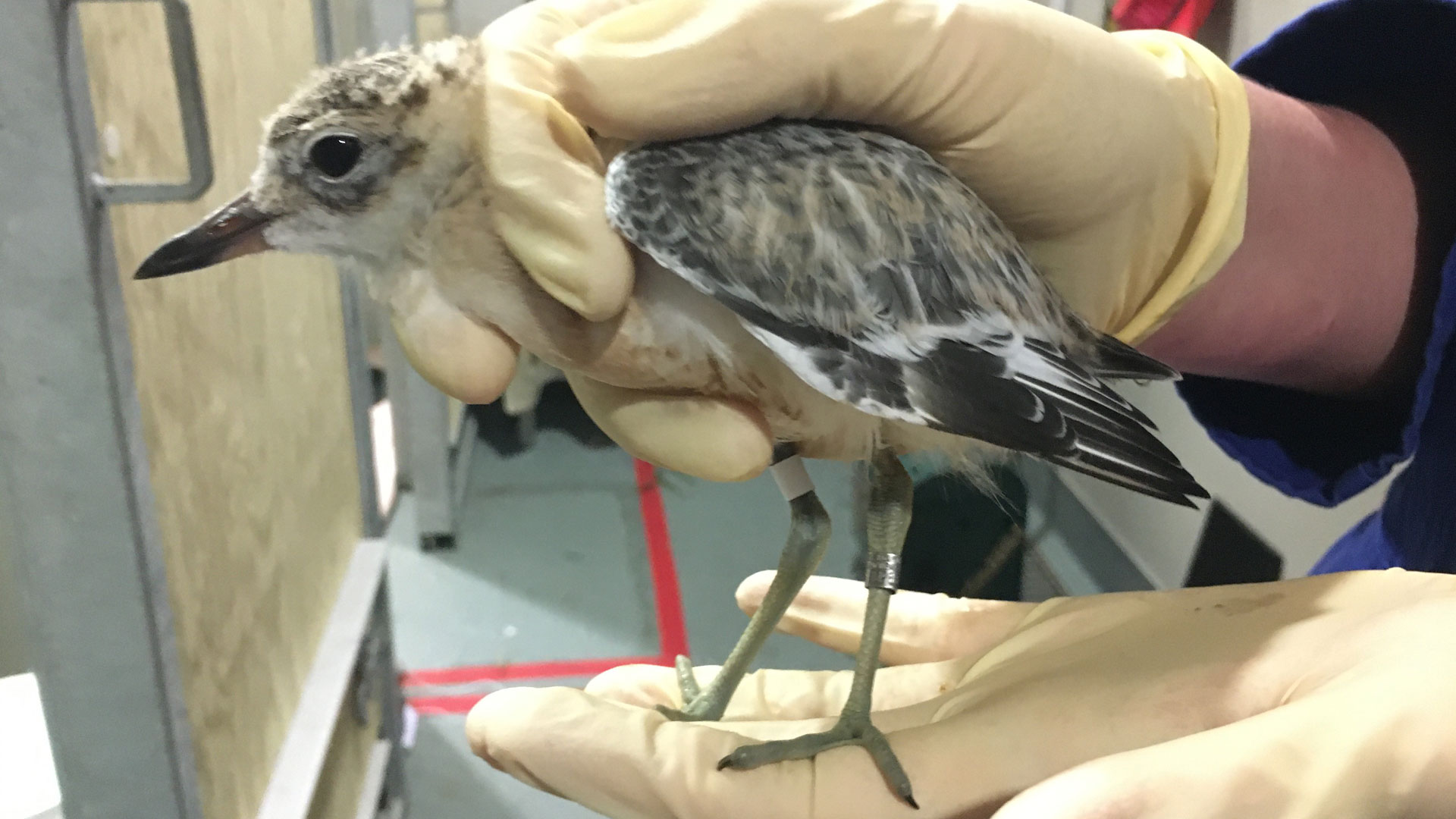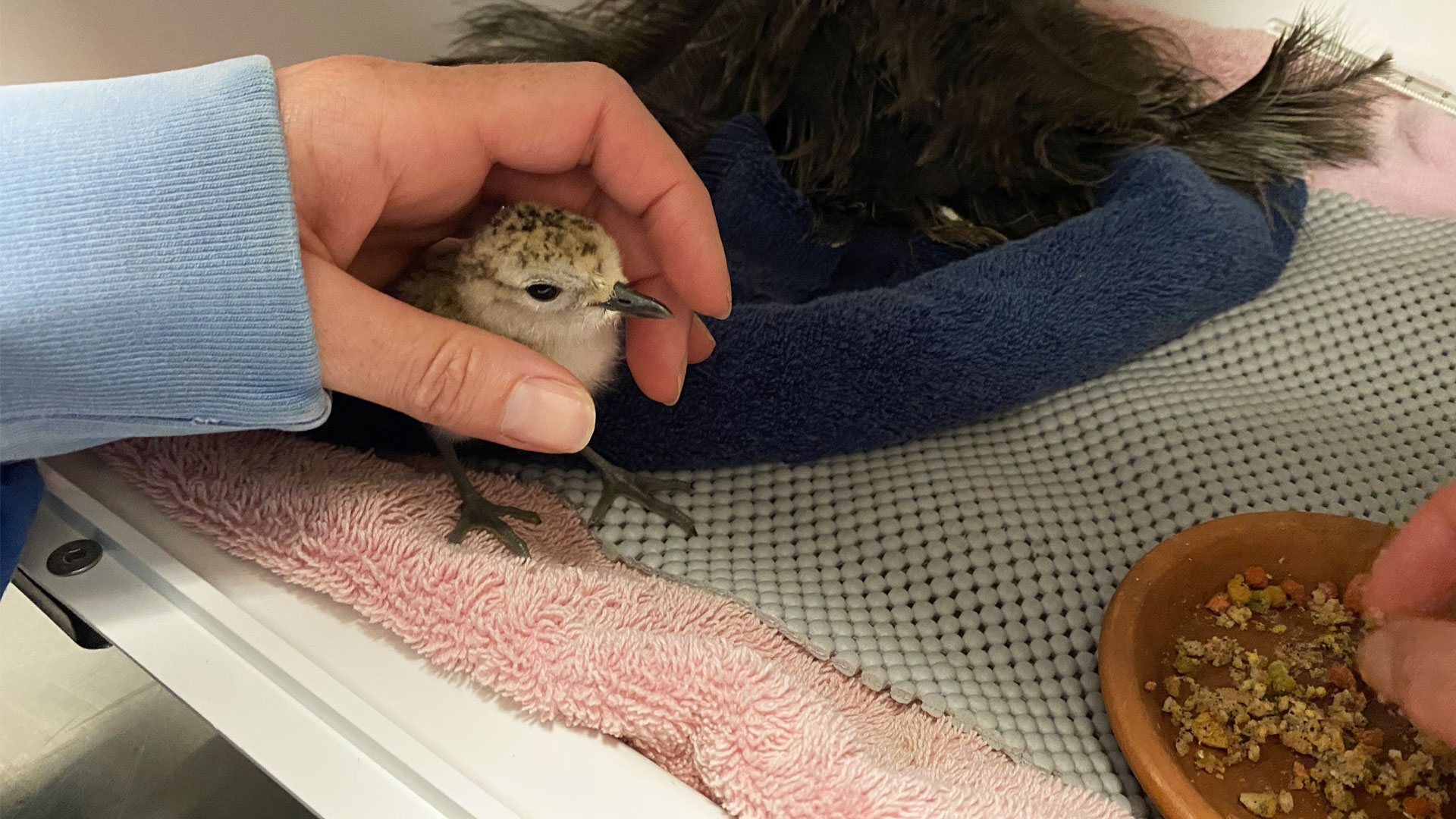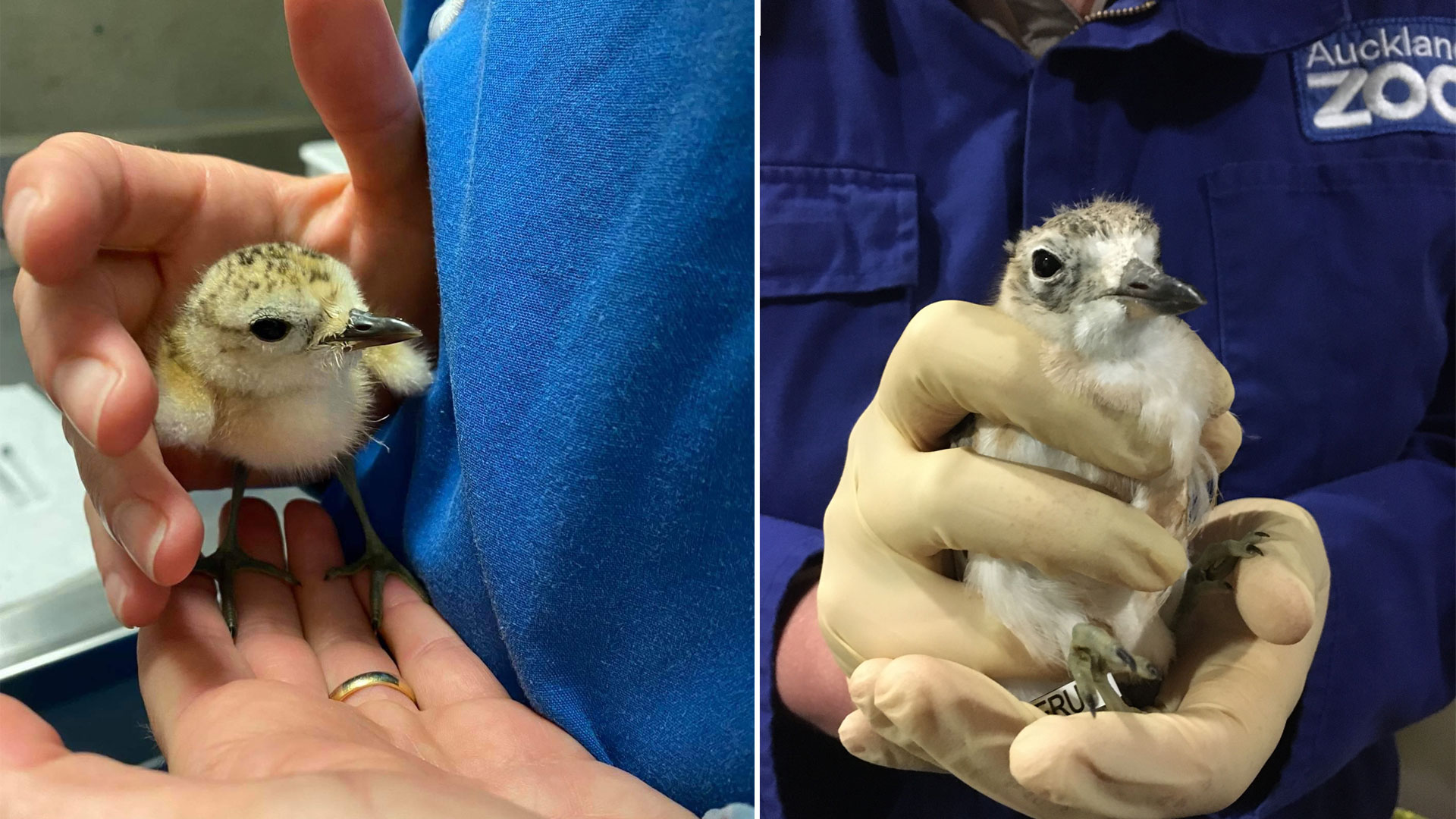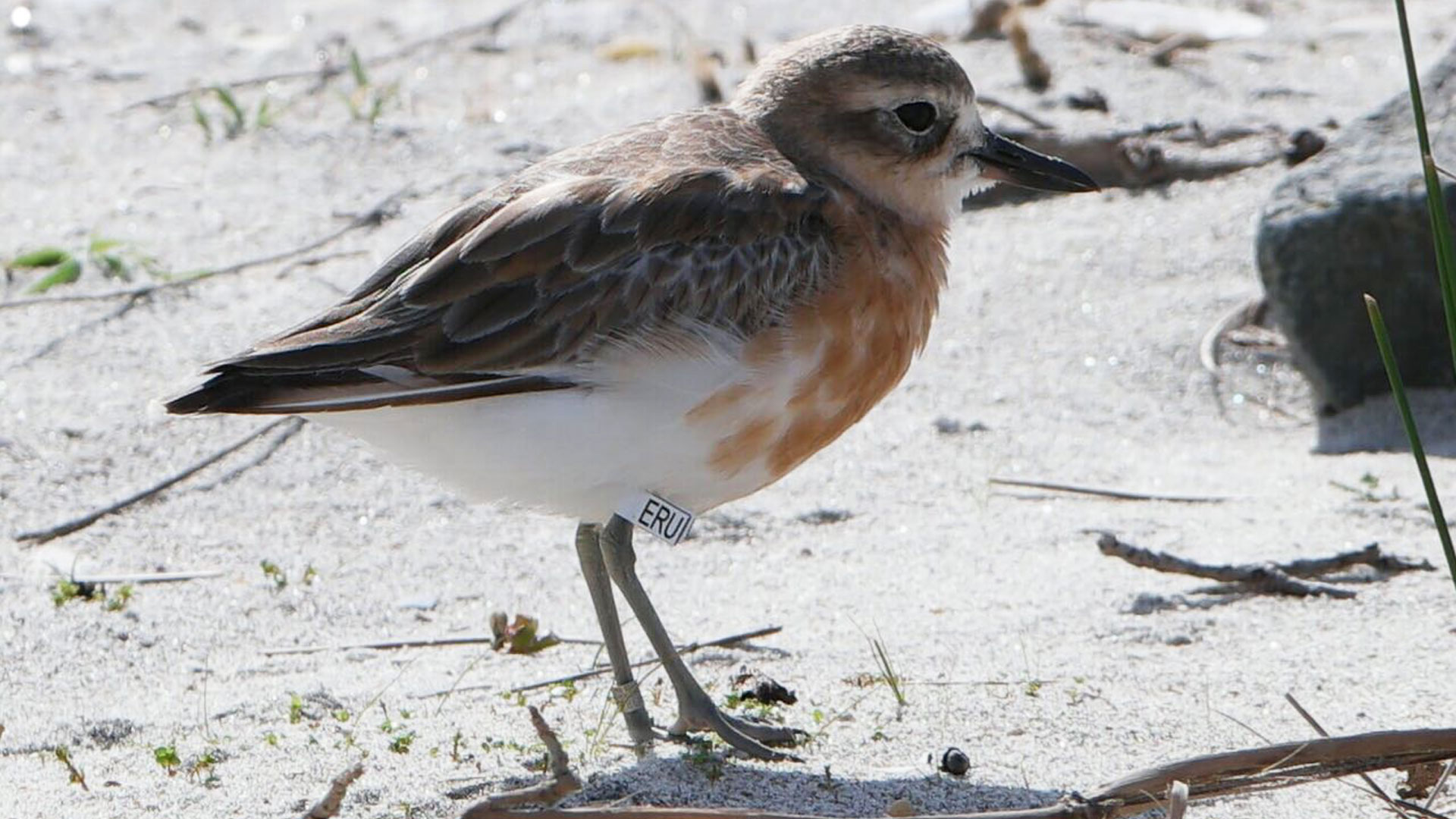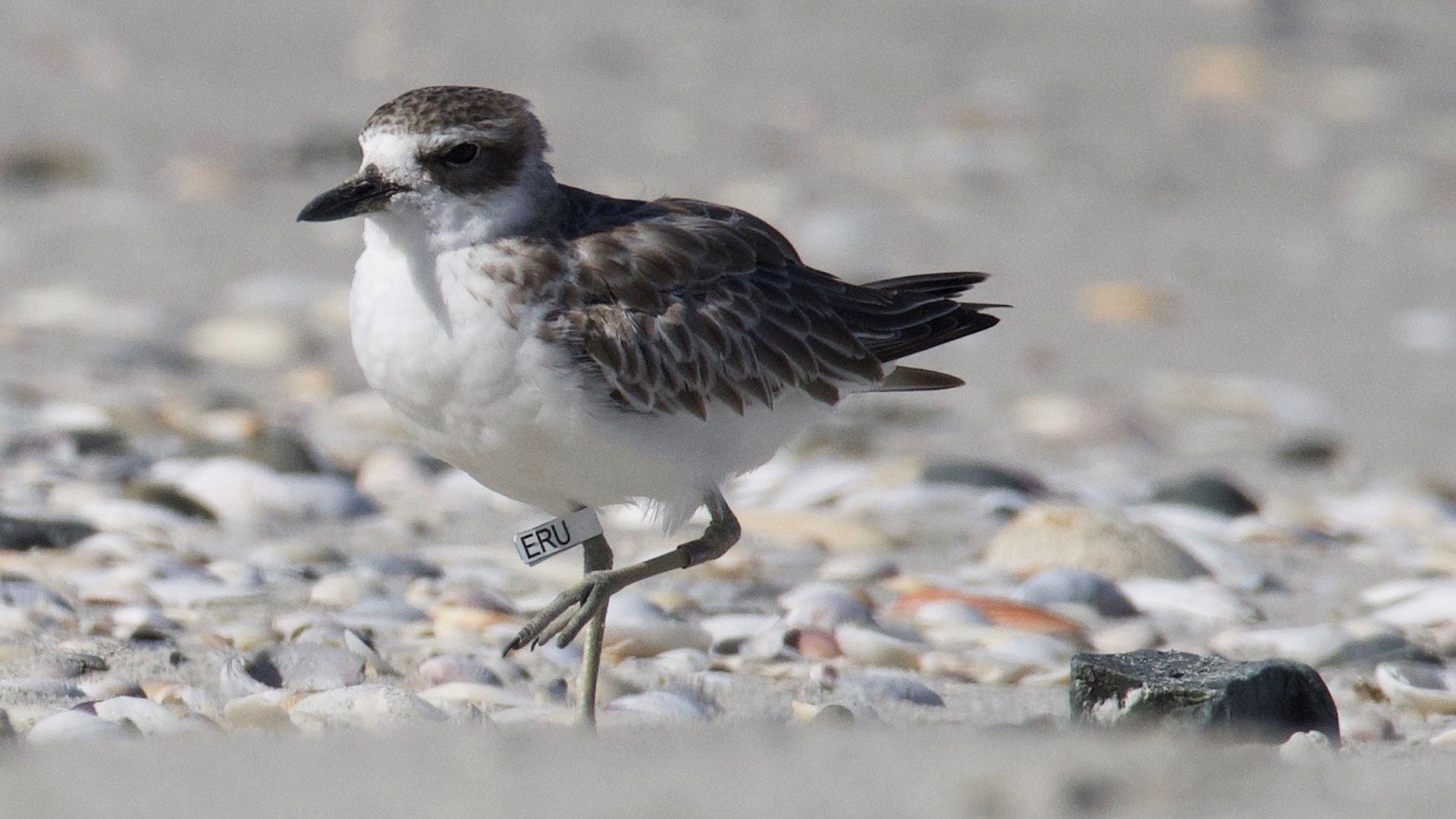In October 2021 a wild tūturiwhatu (northern New Zealand dotterel) chick arrived at Auckland Zoo’s Veterinary Hospital for care and treatment. An endemic species, tūturiwhatu are only found in Aotearoa New Zealand. They were once widespread and common on the mainland but now just 2,500 birds remain, making dotterels more at risk than some species of kiwi.
Found by a Kiwi Rail staff member near an Auckland City rail line, the chick was alone and without the warmth and protection its parents would usually provide. This staff member contacted the Department of Conservation who brought the chick to an after-hours veterinary clinic overnight before it was brought to the Zoo the following morning.
The Zoo veterinary team created a warm, comfortable and contained space for the young bird that contained all the essentials – a feather duster for it to hide under (just like it would a parent bird), a heat lamp, food and water. As the chick grew, it was able to progress into a bigger area.
This species of dotterel is precocious, and unlike many other bird species, they are able to feed for themselves from birth. Tūturiwhatu chicks follow their parents around so they can be shown what to eat in the wild, as well as for protection from predators. To encourage the bird to begin self-feeding, the Zoo veterinary team provided a selection of insects – water boatmen, galleria, crickets, locusts and soldier fly larvae. Providing this natural diet in a contained environment meant they were in close proximity to the chick, who could learn to chase its food safely.
To keep disturbance to a minimum, the Zoo team kept an eye on the chick using a cleverly placed nest camera. This way, they could monitor its progress remotely – confirming that it was reliably eating and checking on what types of invertebrates it preferred to eat. When in human care, it is possible for birds to ‘imprint’, and they can essentially lose some of necessary wild behaviours that they need to fend for themselves. In this instance, remote monitoring helped to reduce this in-person contact time in order to give the chick its best chance at survival once released.
At roughly three weeks, the chick was starting to stretch its wings and grow its flight feathers. At this stage in the chick’s development, it was moved to a long soft mesh tent outside so it could start to get acclimatised to the outdoors and practice flying in a safe zone. Here, it could engage in flight training, building its flight muscles and becoming fit and ready for life in the wild.
On 12 December 2021, two months after arriving into Auckland Zoo care, the now-juvenile bird was successfully released at Omaha with the Department of Conservation and Ngāti Manuhiri, who named the chick Takarangi.
Sue Cook and Marie Ward from the Omaha Shorebird Protection Trust have been monitoring the juvenile since its release, with help from independent volunteer and shorebird expert Gwenda Pulham. Amazingly the juvenile bird has been sighted reliably every few weeks and has started to grow its adult feathers although won’t join the 2022/23 breeding season as it is still too young.
Clinical coordinator Mikaylie Wilson says, “It’s amazing to be able to see an endemic bird that we’ve cared for go on to do so well. This is why we come to work everyday, to be able to care for the animals at the Zoo as well as make a positive difference for sick, injured or at-risk wildlife from the wild. In a typical year we can be caring for threatened species as diverse as sea turtles, albatross, kākāpō, takahē and kiwi at our Vet Hospital. It’s a huge reason why I decided to become a vet nurse, and I’m grateful to be able to contribute to this vital work and collaborate with partner organisations from around Aotearoa. Receiving these updates from the field and knowing that Takarangi is doing so well, makes it all worthwhile.”



